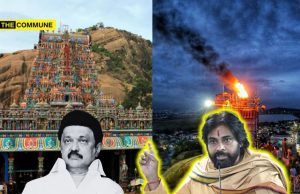
History is replete with episodes of intrigue, mystery, and unresolved topics that intrigue the minds of mystery hunters, and history enthusiasts galore. Some topics transcend the barriers of being confined to a community and become a much larger topic of interest. One such topic is the case of Gumnami Baba, whose mystery has haunted a larger populace for the better part of 3 decades. When a book about this intriguing yet mysterious personality is released, it is bound to excite the reading community. Gumnami Baba was believed to be Netaji Subhas Chandra Bose, the charismatic leader of the Indian Independence movement, who even today evokes a strong nationalistic, patriotic fervour in the minds of young and old alike. The enigmatic character was believed to have been killed in an air crash. Soon, there were many sightings of Bose reported across the world which ranged from simplified versions to outlandish, yet every single account was yet another riddle to solve. In this book, the author tries to unravel the mystery of Gumnami Baba through various reports, books, and articles. While the knots are untangled one by one, we are also witness to the enigmatic character of Bose, some of which is not known in popular lore.
The book can clearly be bifurcated into 2 separate sections viz., the first 5 chapters giving an insight into the personality and life of Gumnami Baba, whereas the rest cover the legal tussle and wrangle that followed.
In the first chapter of the book, the author tries to provide an insight into the huge repository of resources that were researched and referenced to create this book. The author doesn’t try to establish Netaji’s credentials and expects the users to have a prior understanding of the same. In the same chapter, the author draws attention to the burial site of Gumnami Baba inside Faizabad Cantonment and draws parallels with the widely worshipped, hugely respected Sri Rama who also took his Jala Samadhi in a similar location. By the end of the first chapter, the reader has a clear doubt in the mind about Netaji’s death, while a growing feeling about the strong similarities between Gumnami Baba and Netaji.
The common perception of Bose is that of a well-educated, highly qualified person who transitions from being a Congress president to one who gave wings to the armed struggle for India’s Independence. Patriotism and Valour are two words that come to mind when his name is mentioned. However, if one were to say that he had a very deep spiritual bent of mind, an expected response would be “Impossible”, which coincidentally is the name of the second chapter of the book. Chapters 2 – 5 provide a detailed insight into the spiritual side of Bose with his interests ranging from Mantra to Tantra along with the deep spiritual connection with Maa Kaali. One of the spine-chilling episodes relates to a potential Tantra application to harm Bose. The game of cat and mouse with the ruling dispensation, and the opportunistic behaviour of erstwhile followers are some of the political intrigues that were part of this era. However, what does stand out is the steadfast dedication and devotion of his most loyal followers till the very end. Maintaining the need for secrecy, swearing, and walking over fire for the same are hallmarks of these very fine humans who are no short role models themselves. The demise of Gumnami Baba is a bit heartbreaking considering the enigmatic personality he was supposed to be. When a case is filed to identify the unknown saint, it captures the whole wide world’s attention. However, yet another instance of divine providence comes into play wherein another case overshadows this one: The opening of the Babri Masjid-Ram Janmabhoomi case. One can’t help but marvel at the turn of events in the book.
Chapter 6 is the entire court case judgment in verbatim which is detailed for enthusiasts, but a serious hindrance for the normal reader. One doesn’t with to wrangle with the legal terminologies. A simple summary with the gist could have served the book better with a reference to the original document. Chapter 7 is another detailed chapter with all the things left behind by Gumnami Baba with very specific details. In between the details, there are some very interesting paranormal episodes related to Gumnami Baba. However, there are some sections which are repeated from chapters 2-4. Cross references could have made the book more crispier. The stand-out feature of these articles is the meticulous notes and commentaries on various topics including current affairs. Gumnami Baba was clearly abreast of the ongoings within the country and had a sharp mind with his own inferences on the latest events.
Chapter 8 deals with various theories about who exactly Gumnami Baba was and tries to address the various perspectives presented. However, the lack of scientific DNA testing and other related analyses keeps this question hanging in the air. The same points are repeated in the next chapter too wherein Mission Netaji (MN) team is introduced to the reader. The interview with Sidhhartha Sarabhai is quite illuminating and interesting, opening up newer potential scenarios about the role of Gumnami Baba. The rest of the interviews give the account of various stakeholders interested and invested in the truth of Gumnami Baba coming out. The interview of Mrs. Bannerjee who had direct access to Baba is quite revealing and direct. She is quite affirmative that Baba was indeed none other than Subhas Chandra Bose. The 2 reports at the end of the book provide more comprehensive data points into who Gumnami Baba was. The pictures from Gumnami Baba’s collection are quite interesting and open up quite a few questions. A must-watch for all Bose fans and lovers of history.
Errors in the book:
The author does make a factual error in terming Sri Rama as the eighth avatar of Vishnu, whereas the more common understanding is that Sri Rama is the seventh incarnation of Maha Vishnu.
Summary
Overall, the book is quite a fascinating and scintillating read with a lot of spiritual and metaphysical elements. The book could have been crispier with some editing and referencing. Whoever Gumnami Baba was, it is quite clear that he was a very enlightened soul, who had mastered various facets of tantra too. For those who are relentlessly on Bose hunt, this is a good book to get more insights into the man and person that Subhas Chandra Bose was.
Final Verdict: Recommended Read
Gee Vee is an engineer and avid fan of itihasas, puranas and books.
Subscribe to our channels on Telegram, WhatsApp, and Instagram and get the best stories of the day delivered to you personally.




